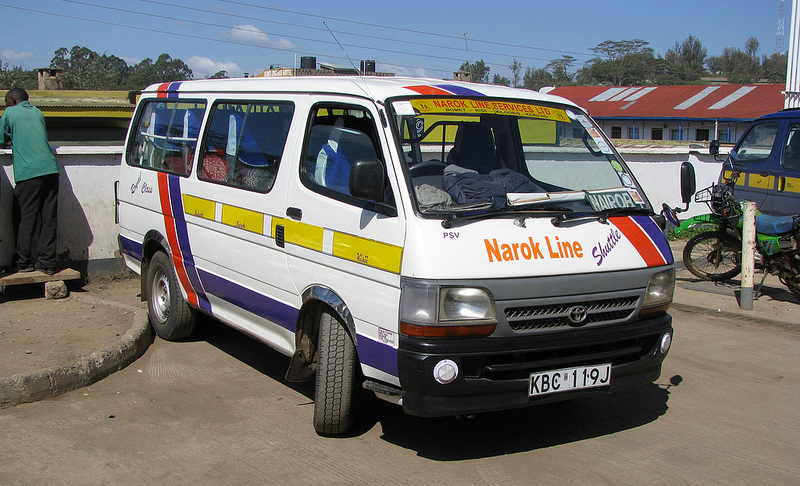December 09, 2013
Matatus and Mass Transit: ITDP Studies Transit Patterns in Nairobi, Kenya
 The wheels are in motion for a big change in Nairobi’s transportation network. Currently, despite only 15 percent of the city’s 3 million residents driving to work, chronic congestion paralyzes the city every day, causing commute times over an hour for many residents. The most popular mass transit option, the matatu minibuses, aren’t enough to address the city’s growing demand. In response to increasing concerns of congestion and pollution, the Kenya National Highways Authority will be building a BRT corridor as part of the World Bank funded reconstruction of the Uhuru Highway. To support the design of the BRT, last month ITDP worked with international planners and a local university to gather detailed data on transit ridership in Nairobi.
The wheels are in motion for a big change in Nairobi’s transportation network. Currently, despite only 15 percent of the city’s 3 million residents driving to work, chronic congestion paralyzes the city every day, causing commute times over an hour for many residents. The most popular mass transit option, the matatu minibuses, aren’t enough to address the city’s growing demand. In response to increasing concerns of congestion and pollution, the Kenya National Highways Authority will be building a BRT corridor as part of the World Bank funded reconstruction of the Uhuru Highway. To support the design of the BRT, last month ITDP worked with international planners and a local university to gather detailed data on transit ridership in Nairobi.

The ubiquitous matatu minibuses are the transportation mode of choice for roughly 29% of Nairobi’s commuters. Carrying 8-14 people each, the matatu minibuses offer greater coverage and accessibility than the city’s few larger buses, and travel in adaptable (if at times unpredictable) routes. Yet despite their advantages, the matatu network is not enough to address the city’s transport concerns. The minibuses are too expensive for the city’s poorest residents, leaving 47% of the population to walk to work; a success in some cases, but often forcing low income residents to walk more than 20km a day. Furthermore, the network is highly informal, leading to irregular schedules, routes, and fare prices. In this context, Nairobi is developing plans for a BRT system, which will greatly reduce commute times, congestion, and pollution as the city continues to grow.
In preparation for Nairobi’s BRT, still in the design phase, ITDP staffers Chris Van Eyken, Jacob Mason, and Xianyuan Zhu spent last month collecting data on transit patterns in Nairobi. The study primarily evaluated ridership patterns on matatus to inform the station location and design, intersection design, and other factors in BRT corridor planning. As part of the study, ITDP is building on the standard General Transit Feed Specifications (GTFS) file type, supplementing it with survey data to model the demand network for Nairobi. This technique allows the model to more accurately reflect transit realities in developing cities, where networks tend to be more informal and less consistent. The data has been collected and coded by a team of professors and graduate students from the University of Nairobi, Colombia University, and the Massachusetts Institute of Technology. Their GTFS data will allow ITDP to create a transit model that will be used to test BRT services.

The team spent several weeks in Nairobi gathering data. With the support of 56 students from the University of Nairobi, ITDP tracked ridership on matatu routes along the Uhuru highway and surrounding areas. The data will inform a report recommending locations and station designs for the Nairobi BRT, to be presented in mid-December to UN-HABITAT and the Kenya National Highways Authority. Plans for the BRT design are expected to be finalized in 2014, with construction set to begin soon after.
Cover photo: Chris and Jacob train students from University of Nairobi to collect survey data on Matatu routes. Credit: ITDP
